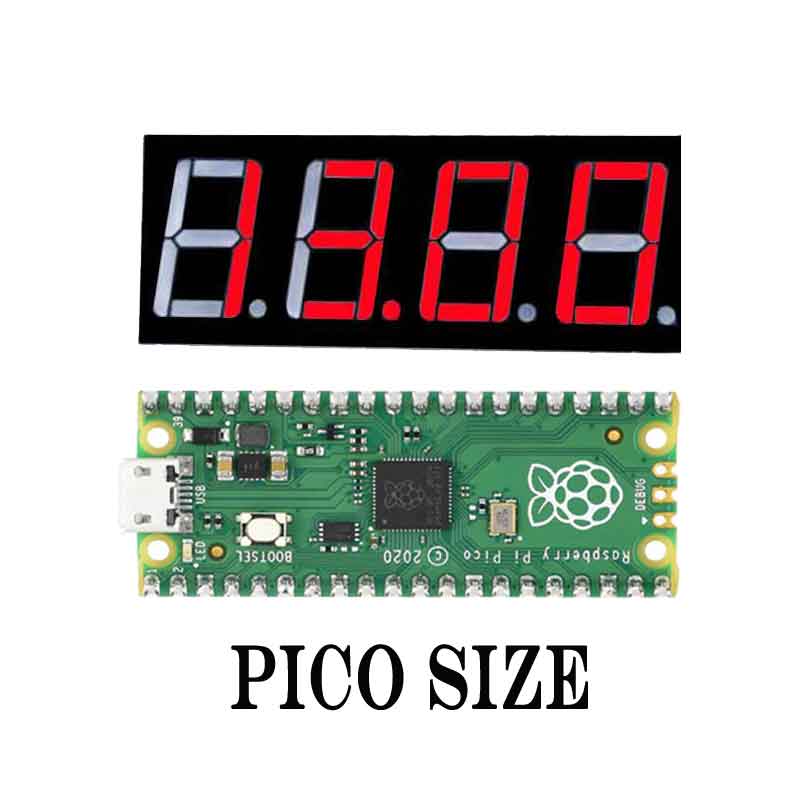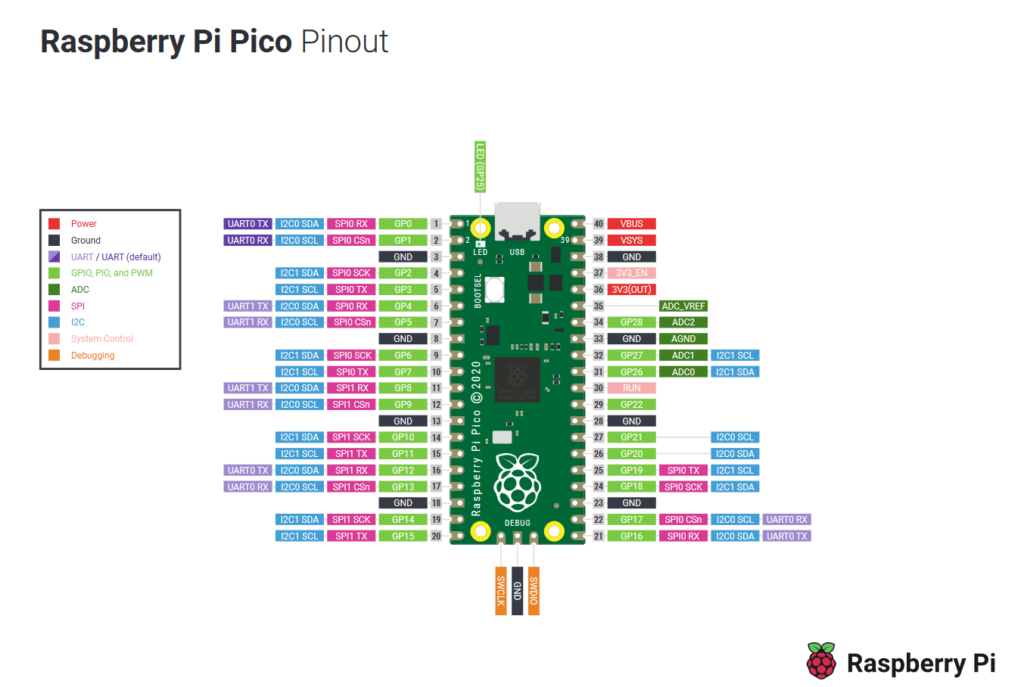In this article we look at a 4 digit 8 segment Display Module for your Raspberry Pi Pico.
The display module is designed to have the Raspberry Pi Pico fitted to it, if you were to do this then you would get access to any of the other unused pins. You can used an expansion board which will allow you to fit the display module but not directly to the Pico.
0.56 inch 4 digit 8 segment Display Module, Compatible with the Raspberry Pi pico size

Pinout
d_pins=[1,13,19,17,16,10,20,18];
w_pins=[21,12,11,0];

raspberry pi pico pinout
Purchase
This LCD costs around $15
Amazon –
Aliexpress –
Code example
This is the Micropython example from the link underneath
from machine import Pin
import time
d_pins=[1,13,19,17,16,10,20,18];
w_pins=[21,12,11,0];
DIG1=Pin(w_pins[3], Pin.OUT)#千位位码
DIG2=Pin(w_pins[2], Pin.OUT)#百位位码
DIG3=Pin(w_pins[1], Pin.OUT)#十位位码
DIG4=Pin(w_pins[0], Pin.OUT)#个位位码
A=Pin(d_pins[0], Pin.OUT)
B=Pin(d_pins[1], Pin.OUT)
C=Pin(d_pins[2], Pin.OUT)
D=Pin(d_pins[3], Pin.OUT)
E=Pin(d_pins[4], Pin.OUT)
F=Pin(d_pins[5], Pin.OUT)
G=Pin(d_pins[6], Pin.OUT)
DP=Pin(d_pins[7], Pin.OUT)
number={
'0':
[0,0,0,0,0,0,1,1],#0
'1':
[1,0,0,1,1,1,1,1],#1
'2':
[0,0,1,0,0,1,0,1],#2
'3':
[0,0,0,0,1,1,0,1],#3
'4':
[1,0,0,1,1,0,0,1],#4
'5':
[0,1,0,0,1,0,0,1],#5
'6':
[0,1,0,0,0,0,0,1],#6
'7':
[0,0,0,1,1,1,1,1],#7
'8':
[0,0,0,0,0,0,0,1],#8
'9':
[0,0,0,0,1,0,0,1],#9
}
def display(num,DP):
global number
count=0
for i in range (len(d_pins)):
s=Pin(d_pins[i], Pin.OUT)
s.value(number[num][count])
count+=1
if DP==1:
Pin(d_pins[7], Pin.OUT).value(0)
def clear():
for i in range (len(w_pins)):
j=Pin(w_pins[i], Pin.OUT)
j.value(0)
time.sleep(0.0001)
for i in range (len(d_pins)):
h=Pin(d_pins[i], Pin.OUT)
h.value(1)
time.sleep(0.0001)
def showData(num):
d_num=num
location=d_num.find('.')
if location>0:
d_num=d_num.replace('.','')
while len(d_num)<4:
d_num='0'+d_num
for i in range(0,4):
time.sleep(0.001)
clear()
k=Pin(w_pins[3-i],Pin.OUT)
k.value(1)
if i==location-1:
display(d_num[i],1)
else:
display(d_num[i],0)
if location<0:
for i in range(0,4):
time.sleep(0.001)
clear()
k=Pin(w_pins[3-i],Pin.OUT)
k.value(1)
display(d_num[i],0)
while True:
def int_str():
for a in range(0,6):
for b in range(0,10):
for c in range(0,6):
for d in range(0,10):
for j in range(0,10):
#for k in range(0,10):#调整显示速度快慢
dig=a*1000+b*100+c*10+d
num=str(dig)
showData(num)
int_str()
Links
